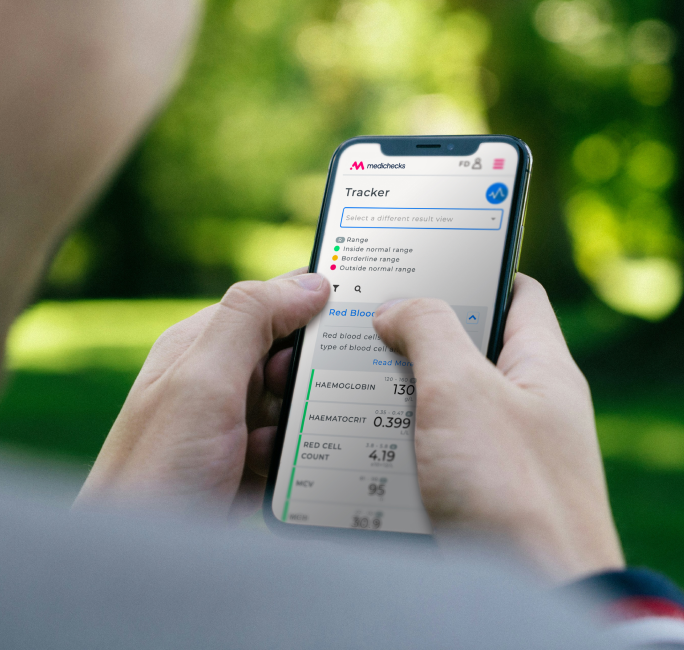Worried about iron overload? If you're experiencing fatigue, joint pain, or unexplained symptoms, this test can check for haemochromatosis—an inherited condition where excess iron builds up in the body. Too much iron can damage organs over time, so early detection is key. This test is ideal if you’ve got a family history of haemochromatosis or symptoms linked to high iron levels.

Go beyond the numbers
Get ready to elevate your health understanding with a personalised doctor's report. Go beyond results and tap into expert insights tailored just for you.
- Actionable advice
- Expert support
- Tailored recommendations

How it works
You have the flexibility to choose what works best for you. Enjoy the comfort of having a friendly nurse visit your home for a quick blood draw, opt for a convenient visit to one of our nationwide partner clinics, or self-arrange a draw at a location that suits you.
Take control of your health with Medichecks – order your blood test today!

Track, improve, and monitor your health over time.
MyMedichecks is your personal online dashboard where you can view your results, access clear and simple explanations about individual health markers, monitor changes in your health, and securely store information about your medical history, lifestyle and vital statistics.
What's in the test?
Genetics
Hereditary Haemochromatosis
Learn more
Iron status
Iron
Learn more
TIBC
Learn more
Transferrin saturation
Learn more
Ferritin
Learn more
How to prepare for your test
Prepare for your Iron Overload (Haemochromatosis) Blood Test by following these instructions.
Sample collection and timing
- Take this test when any symptoms of short-term illness have settled.
Medications and supplements
- Do not take biotin supplements for two days before this test, discuss this with your doctor if it is prescribed.
Test limitations
Reviews
FAQs
What happens when iron levels are too high?
A build-up of iron in your body can cause symptoms including fatigue, joint pain and weakness, abdominal pain, and weight loss. If left untreated, iron overload can lead to health issues, including damage to the joints, liver, heart, and pancreas.
Haemochromatosis is more likely to occur in people with a northern European background, particularly Celtic background, such as in Ireland, Wales, and Scotland.
How do you treat iron overload?
The treatment for haemochromatosis is to have blood taken from your body via a phlebotomy blood draw to reduce your iron levels. There is also medication that can reduce the amount of iron in the body, like chelation therapy.
Our iron overload blood test includes an iron profile to see how much iron is in your blood and how much is stored in your body (ferritin). It also checks for the hereditary haemochromatosis genetic marker to help confirm a haemochromatosis diagnosis.
What is iron overload?
Haemochromatosis, also referred to as iron overload, is an inherited condition which causes iron in the body to build up over a long time.







